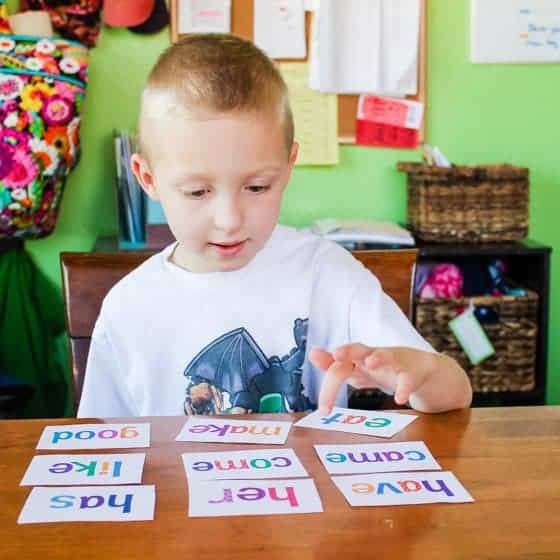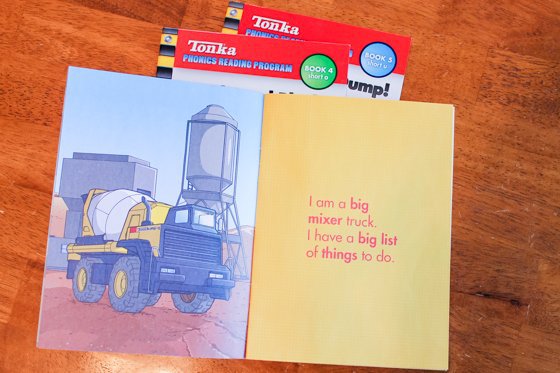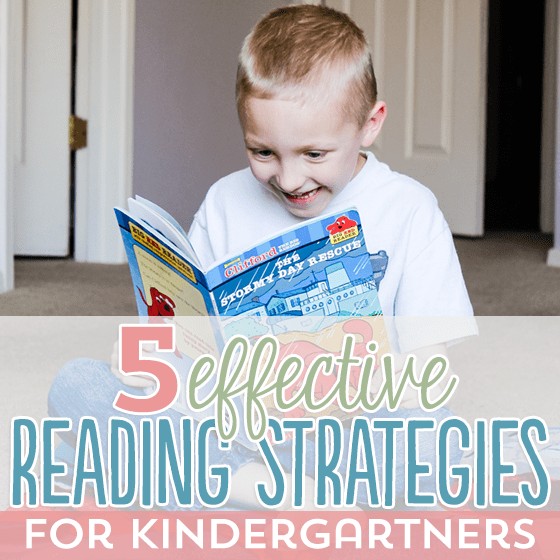Kindergarten is an incredible time in a child’s life! Not only is it a growing time for your child socially (sometimes it’s even the first time they are away from you!) their academics really step up here as well. Depending on where you live, your child may be attending a full or a half day program, both of which have their benefits. Either way, you want to be sure to supplement what you child learns at school at home so that their literacy foundations become strong.
Entering kindergarten, kids will run the gamut of what they already know. All will be expected to hit certain milestones, however, before they progress to first grade. Be sure your child is feeling confident in meeting these standards by working with them at home and encouraging a literacy-rich environment where they can feel successful and happy.
Weaving language and literacy into everyday activities at home can help your kindergartner to develop as a reader and as a writer. Simple projects like writing a grocery list together, making words with magnetic refrigerator letters, or just talking about what you see as you drive in the car can become important moments in your child’s literacy development.
Use these five strategies to help your child become the best reader they can be:
1. Read for 20 minutes each day together:
Most kindergarten teachers will require a certain amount of reading a night as apart of their homework. Depending on where your child is at, a certain portion of this time should be together reading and some can be independent. Read alouds are still just as important now as when they were toddlers and preschoolers. Kids are never too old to hear a story- just the type of story they are interested in hearing may!
When your child is beginning to read independently, be sure to try and find some “just right” books for them. What is a “just right” book? Look for books that have colorful illustrations with matching text, so kids can use the picture to help them figure out what the words mean.
2. Don’t be too quick to tell them the word:
As the school year progresses, you will be amazed at how your child learns to read! Keep encouraging this at home by having a selection of those “just right” books available for them. Sit with your child and listen to them and if they struggle with a word, don’t be too quick to tell them what it is. Encourage the use of some basic decoding strategies. Three simple ones to focus on are the following:
- Use the picture to help you figure out the word
- Use their phonetic skills to sound out the word, either letter by letter or by “chunking” which is looking for groups of letters, like blends or phonemes, that they already know and see if the rest of the word falls into place.
- Change the vowel- if the word is CAT and they say the long A sound, encourage them to change the vowel to the short sound and see if it makes sense.

3. Pump up the phonics:
Big words can be intimidating to new readers so help make them more comfortable by remembering that you can break apart most words into “chunks”. Practice individual sounds and also letter pairs, also called phonograms. Phonograms, such as ed, ng, or th, all make a specific sound. By knowing what that is, your child can much easier figure out what a word means!
4. Sight words are everywhere!
Unfortunately some words can’t really be sounded out well- these words are sight words- and your kids just need to know them. Other words they see SO often, it just makes sense to commit them to memory. Think of words like “the” “said” or “make”. Your kids will read these in almost every book they look at, and once they know them, life will be much easier.
Go one step further by labeling some things in your house with sight words. Take a pack of index cards and a marker and surround your child with literature; stick the word “door” on the door, write “wall” by the wall, label the basket of toy cards with “cars”. Not only does this immerse your child in a print-rich environment, it also has the added benefit of allowing them to clean up after themselves easier by knowing where their toys go!
5. Rhyme time:
Poetry and nursery rhymes are the perfect way to encourage language development in kindergartners since the sing-song nature of the words make kids want to read and follow along. By incorporating short, funny poems into your child’s reading repertoire, you are helping to improve their vocabulary and pre-reading skills because when children know how to find a rhyme, they are solidifying their phonetic skills and can learn to read easier! When you are visiting your local library to check out some of those “just right” books, grab some poems too! Shel Silverstein and Roald Dahl are two tried and true favorites, and don’t forget about Dr. Seuss or Mother Goose.

Kindergarten is a such a special time in a child and parents life- be sure you are raising a confident reader by incorporating these simple strategies into your daily routine. Your child will love all the one-on-one moments they are getting with you and you will love all the jump starts they are getting on their reading! All kids are different though, so be sure to follow your child’s cues- don’t overwhelm them and never hesitate to ask your child’s teacher for additional tips. Remember that you are partners in your child’s education.
Make sure you check out this post on 5 Effective Reading Strategies for Preschoolers.
Photo Credits: Our Three Peas








































